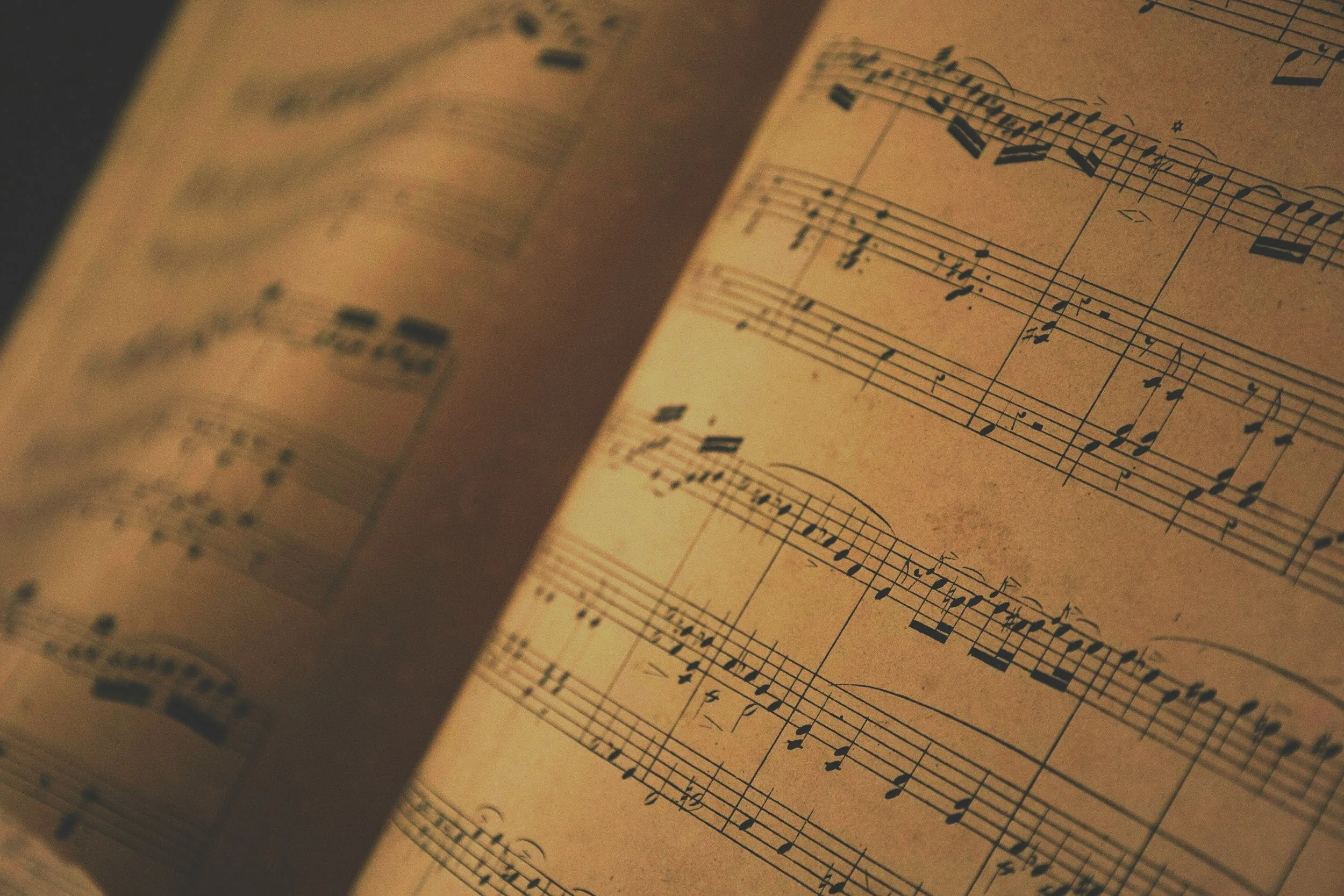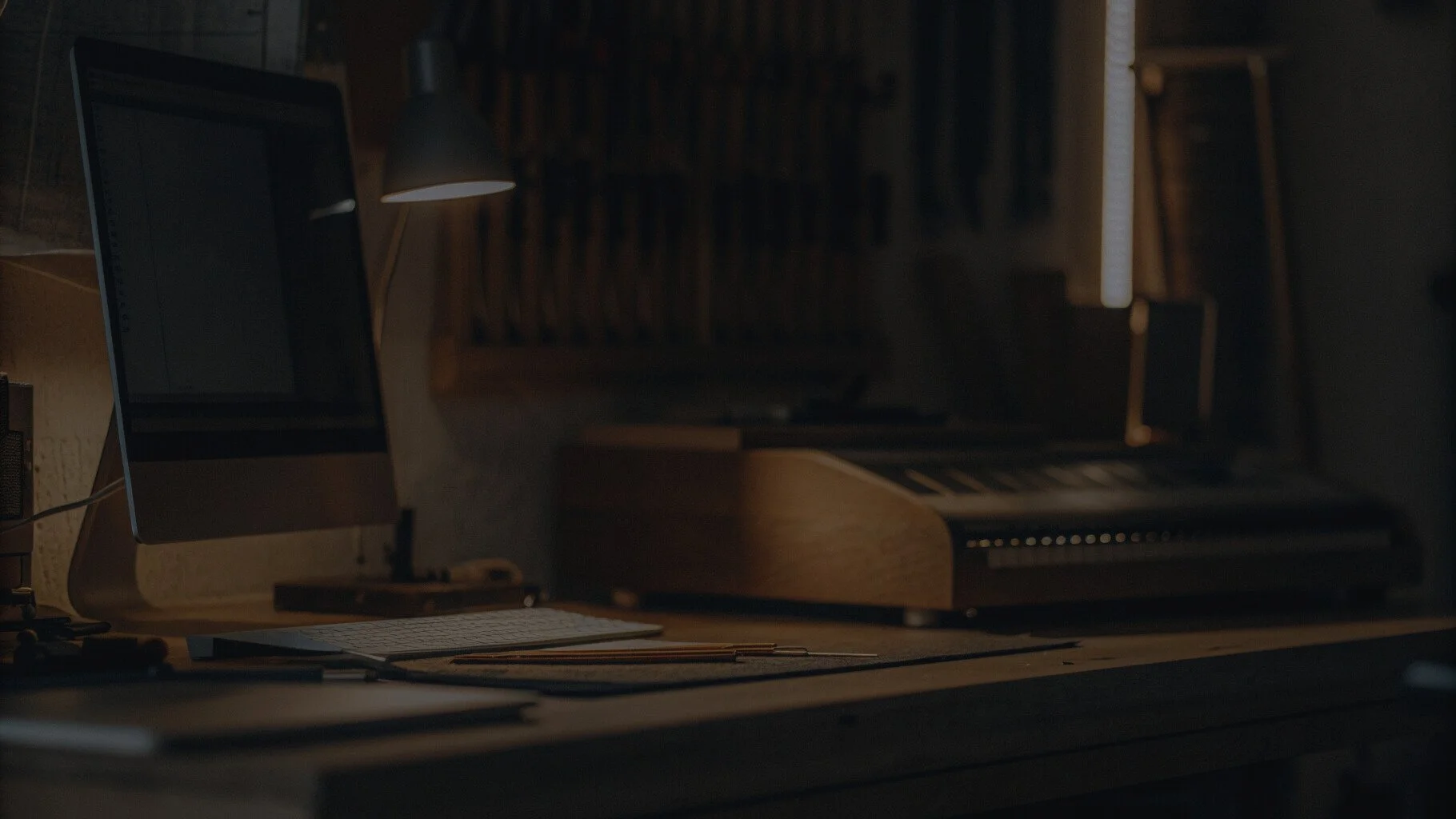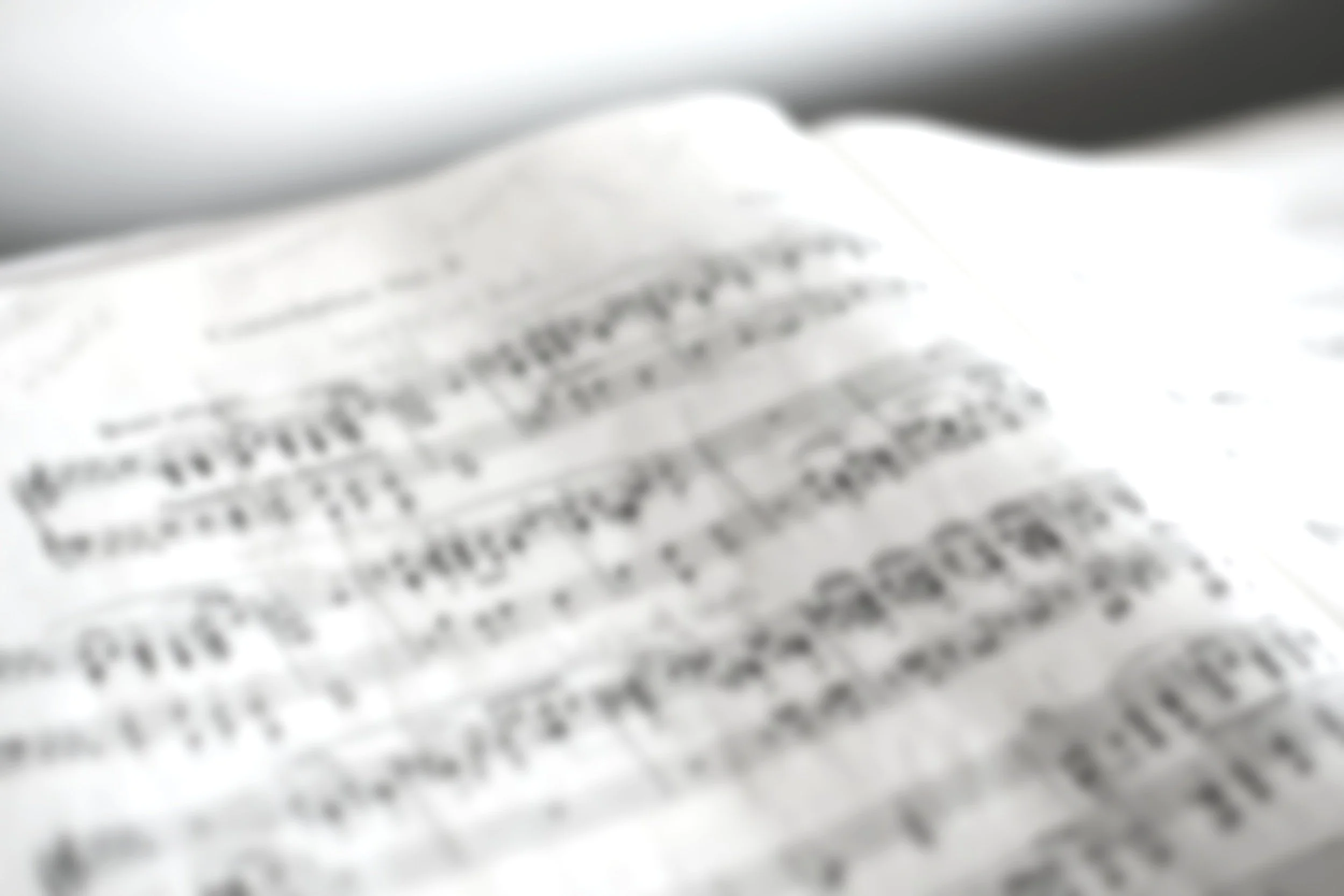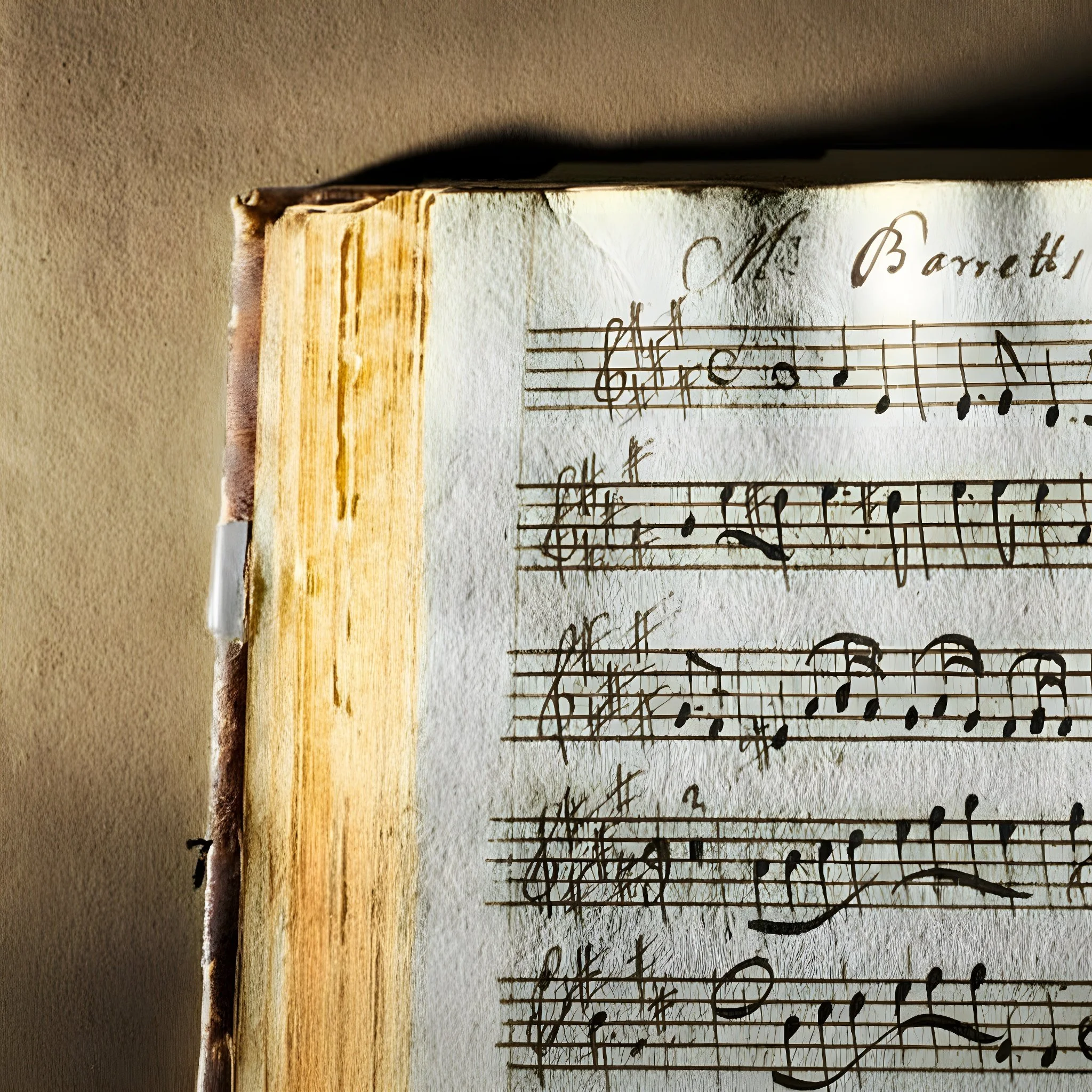
In every measure,
quality engraving makes all the difference.

-
Prepare the score.
From handwritten manuscripts to short scores and notation files, we transform raw ideas into beautifully organized, performance-ready layouts. Each page is crafted with clarity and precision so your music speaks for itself—on stage or in session.
-
Perfect the details.
Quality engraving elevates performance. Every layout is optimized for balance, pacing, and flow—crafted to maximize musical communication. When every dynamic, slur, and cue supports both readability and your artistic intent, we know we’ve done our job.
-
Print with confidence.
Whether it’s a single cue for a film session or a full symphonic score, you can be confident the final product will be just right. We print using premium materials and durable finishes—and most importantly, we know what makes every format perform beautifully.
-
Sell your music.
Our printing services are available in bulk or for single orders—perfect for session materials, commissions, or publishing. You can also sell your scores and arrangements directly through us: link the product on your site, and we’ll handle the rest.

Engraving.
Engraving is where musical ideas become legible, repeatable, and performable. It’s the craft of translating sketches, notation files, or handwritten pages into scores and parts that musicians can trust. That means clear spacing, balanced systems, logical cueing, and page turns that land where they should — the details that determine how smoothly rehearsals run and how efficiently sessions are recorded.
This work draws on layered experience: knowing the unique idioms of each instrument; understanding what a conductor must see to shape a phrase; recognizing when notation reveals intent and when it obscures it; conveying color, balance, and gesture from the perspective of an orchestrator; organizing parts and scores with the precision of a librarian; and shaping page turns, tempo changes, and cue structure with an ear bent toward realistic studio time.
Engraving, at its best, ensures that the way the music looks supports the way the music is meant to sound.
Starting Points
We can begin from handwritten manuscripts, sketches,
short scores, MIDI reductions, partial orchestrations,
DAWs, or completed notation files.
(Dorico, Sibelius, and Finale workflows are fully supported. Others should convert to MusicXML.)
For early projects, we can clarify notation, fill out sketches,
or refine orchestration before engraving begins.
Score/Part Standards
Standard Concert Layouts: Orchestra (full, chamber, or Pierrot), band (symphonic, wind ensemble, or marching), choir, chamber ensembles, solo piano, and big band.
Standard Session Layouts: 40-, 60-, or 80-piece scoring-stage orchestra (with or without choir), string sessions, hybrid orchestral sessions, and spot-doubled or overdub layouts.
(Custom layouts available as needed.)
Project Focus
Concert Music: idiomatic notation, clear cueing, familiar typography, structural rehearsal marks, multimeasure rests paced for musical phrasing, and casting-off for intuitive page turns/pagination.
Scoring Sessions: bar numbers every bar, segmented cues, clean meter/key changes, clarified timpani/harp pedaling and bowings, punches and streamers (when provided), and click track / visual sync information.

Printing.
This is no generic print shop — it is a music-specific print production, designed exclusively for concert and film composers who require both precision and quality. Every project is assembled, bound, and finished by hand to the highest professional standards. We don’t simply press “print.” Each score and part is carefully inspected for alignment, contrast, and margin consistency to ensure your music looks exactly as it should—clean, balanced, and performance-ready. No smudged ink. No crooked staves. No cut-off markings.
Our print services support rehearsals, recording sessions, premieres, and catalog publication, offering the same meticulous standards used by top scoring stages and concert publishers. Whether you need one perfectly bound score for a film session or a full publication print run for your catalog, every page receives the same level of precision and care. At Silverling Music, your music doesn’t just get printed—it’s crafted for the stage, the session, and the shelf.
Available Sizes
U.S. Formats: 12×18, 11×17 (Tabloid), 11×14, 9×12 (industry standard parts), 8.5×11 (Letter), 8.5×14 (Legal), Choir Folio (8.5×11 folded), Marching Band Flip-Folder (approx. 5.5×8.5 or 6×8)
European Formats: A3/A4, B3/B4 (other available upon request)
Paper & Finish
Parts: 70–90 lb text (approximately 28–35 lb bond)
Scores: 80–100 lb text (approximately 32–38 lb bond)
Covers: 100 lb cover (approximately 68 lb bond)
High-contrast black, no-glare stock ideal for stage lighting. Optional full-color covers, folder jackets, and set labeling.
Binding Options
Spiral, saddle-stitch, or comb binding available.
Each binding is chosen based on the project’s purpose and end customer use. That said, we recommend spiral for practical rehearsals, saddle-stitch for presentation, and comb for compact storage or distribution.
Folder jackets are available upon request.

FAQs
-
Engraving is the preparation of a score and its parts so they can be read, rehearsed, and performed with ease. Your musical content does not change. Instead, spacing, line breaks, system flow, cues, articulations, and page turns are shaped and carefully placed so the music communicates clearly to the performer and conductor exactly what the composer is trying to convey. The result is music that looks as intentional as it sounds—readable, balanced, and dependable in rehearsal and performance.
-
Concert engraving emphasizes expressive shaping, conductor readability, and rehearsal pacing. Scoring-session materials emphasize timing, segmentation, cue navigation, bar numbering, and clarity at speed. Both forms follow professional standards; the difference lies in how information is presented to support either interpretation or precision.
-
There are established conventions that ensure clarity for performers and conductors. These conventions are not exactly “mandatory,” but they do translate into better performance, simply because performers and conductors are already familiar with them. That said, you are welcome to specify preferences for fonts, engraving aesthetics, rehearsal mark style, layout details, etc.. If you already have a house style, we will follow it. If not, we will work with you to develop clear, professional norms and invite your input during proofing.
-
You are welcome to send Dorico, Sibelius, Finale, MuseScore, MusicXML, MIDI exports, handwritten scores (scans or photos), or a short score/DAW sketch. There is no need to clean up the file beforehand. Send what you have—we will take care of technical formatting, cleanup, and layout.
-
We begin with your source materials and confirm scope and timeline. A short sample page is engraved so you can review spacing and style. Then the full engraving is completed, followed by a watermarked PDF proof. You review and request revisions (typically one to two rounds). Once approved, final print-ready PDFs are delivered, and printing/shipping can be arranged if desired. Turnaround depends on length and complexity, but timelines are always discussed and confirmed in advance.
-
These elements are shaped to support real rehearsal flow. Page turns fall in rests or logical breaths. Cues are added for security. Bowings and divisi are handled respectfully—either based on your existing markings or through standard orchestral practice. Percussion assignments are organized so the part is playable by the number of players you intend. Transposing instruments follow the norms preferred by the ensemble type (concert, session, educational, or professional), though you are certainly able to specify non-standard transpositions.
-
You can be as detailed or minimal as you like. If you have specific intentions, we will preserve them. If something can be clarified or improved, we will suggest refinements. If you prefer to delegate those decisions, we can handle them while still keeping the musical character consistent with your voice.
-
Yes. Contemporary notation, non-traditional symbols, and extended performance techniques are welcome. If needed, performance notes or notation keys can be added to ensure clarity for players.
-
Consistency comes from controlled templates, systematic proofing, and reference scoring. Once we establish your style preferences, they become part of your engraving profile, so future works remain visually unified across your catalog.
-
All final source files, part templates, and print-ready PDFs are archived securely for future access. Each piece is given a work number and each layout is designated within that piece to be easily called up for reprinting or edits. If you need a new print run, a revised edition, or a new ensemble version later, we can produce it without re-engraving from scratch.
-
Yes. Printed scores and parts can be labeled, collated into folders or sets, and packaged securely for direct delivery to the venue or contractor. Materials are packaged and protected to arrive flat, clean, and ready to use.
-
Yes. Corrections can be turned around quickly, and reprints will match previous runs exactly in layout, margins, staff size, pagination, and binding.
-
Pricing is based on materials, shipping cost, length, instrumentation, complexity, and whether orchestration or score cleanup is required. A clear estimate is always provided in advance, with no surprises.
-
Payment for engraving is due at the start of the project. Once we begin, you’ll receive a sample page so you can see the engraving style, spacing, and layout approach before the full score is completed. If you decide not to move forward after reviewing that sample, the project can be canceled and your payment will be refunded, minus a $50 non-refundable deposit for the initial setup and sample work. After the sample page is approved, the project moves into full engraving, and the payment becomes non-refundable.

